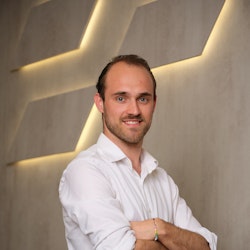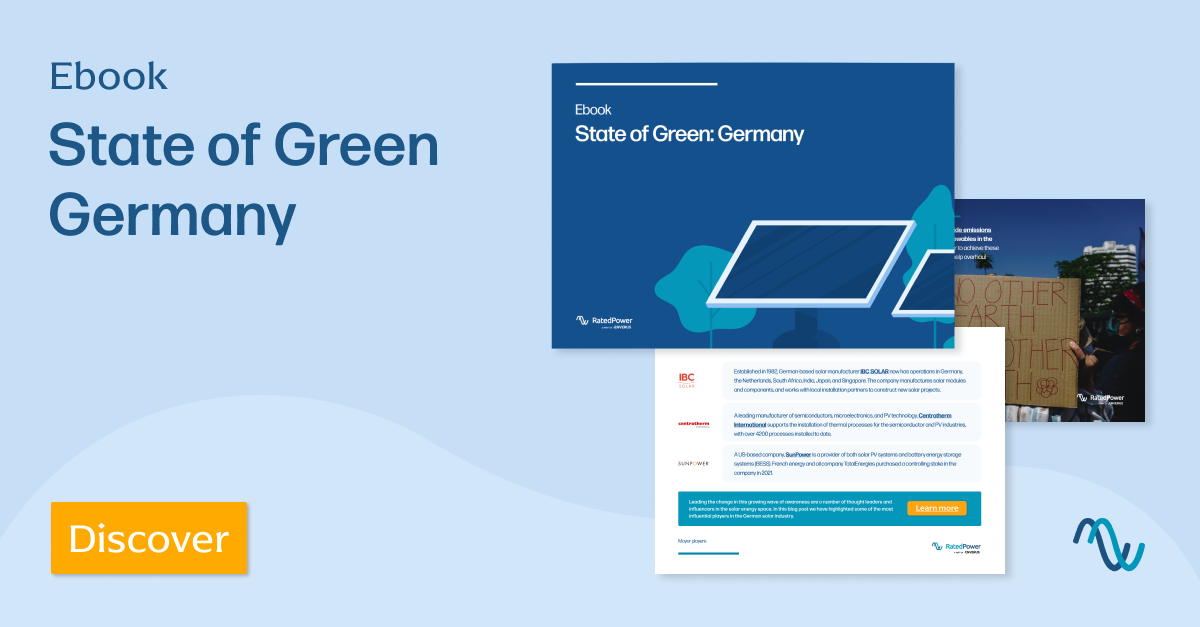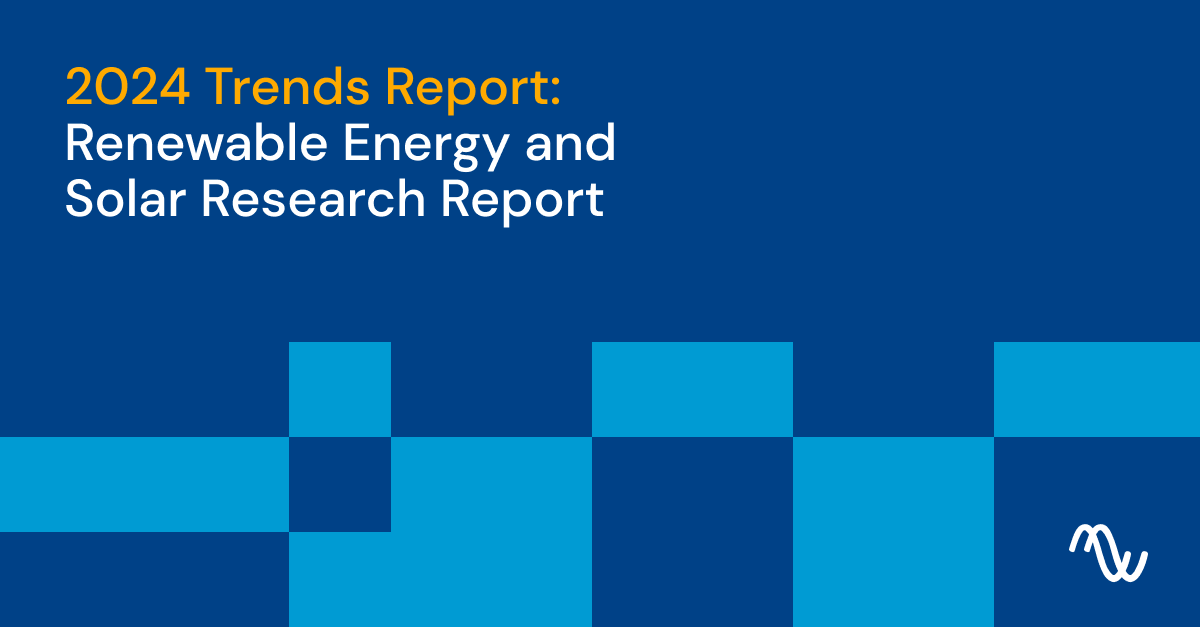- Solar energy blog
- DACH trends: Renewable and solar energy in Germany
DACH trends: Renewable and solar energy in Germany
Our trend report reveals Germany’s solar power and renewable energy preferences, including bifacial modules, string inverters, fixed structures, and AC BESSs.


Julian Scheer
Customer Success Manager
As a Principal Consultant at RatedPower, Julian Scheer is responsible for directly supporting clients throughout different markets. With his background in Heat and Power Engineering he is passionate about tackling climate related challenges both technically and from a behavioral perspective. For him transforming the Energy System of today is critical to ensure a more sustainable future!

The DACH region, consisting of Germany (Deutschland), Austria, and Switzerland (Confoederatio Helvetica), is an economic powerhouse with a combined population of over 100 million. The countries in this region share not just borders but cultural roots, language, and lifestyle traits. However, when it comes to energy trends, Germany outranks its neighbors and shows the most potential.
In the latest RatedPower Trends Report, 25% of respondents ranked Germany as having potential for renewable energy investment in 2024, with only China (33.3%) and the United States (45.2%) ranking higher.
Germany’s broader energy makeup and policies contribute to this potential. The country has set ambitious climate goals under its Climate Law, aiming for net zero emissions by 2045. Renewables are also expected to account for almost 80% of electricity generation by 2030 and 100% by 2035, while coal is expected to be completely phased out by this time too.
Germany’s current renewable efforts focus largely on two areas: offshore wind and solar photovoltaics (PV). By 2030, the country aims to reach 100 to 110 gigawatts (GW) of onshore wind, 30 GW of offshore wind, and 200 GW of solar energy capacity.
Germany's path is clear and both large investments and strong legislative reforms will ensure these targets become a reality. Meeting these goals on the proposed timelines will be important for Germany’s future and the wider DACH region.

Learn all about the State of Green Germany with this ebook.
About the survey
In 2023, RatedPower surveyed energy industry professionals from across the globe with a broad range of perspectives on renewables. Over 30 nations were represented, each bringing unique insights into innovations, trends, challenges, and policy.
The questions posed to these industry experts were wide-ranging. They covered both current technological advancements and future developments that they would like to see within the sector. Almost 90% of surveyed participants worked directly within the solar sector, and over half of all respondents had between five and 15 years of experience in the energy industry.
Germany’s solar power and renewable energy preferences
This RatedPower report revealed several interesting statistics about Germany’s solar power and renewable energy preferences.
Nearly 80% of German PV projects favor bifacial modules
The data revealed that, in Germany in 2023, bifacial modules were favored over monofacial ones by an overwhelming majority, with a 79.21% usage rate for the former and only 20.79% for the latter.
This preference is likely due to bifacial modules’ superior efficiency and performance output. Designed with two active faces capable of capturing sunlight from both sides, bifacial simulations typically showcase between a 3% and 10% increase in solar generation capacity on average compared to traditional monofacial panels that only capture light on one side. Bifacial modules also require less space than their monofacial counterparts for the same amount of power generation.
Close to 87% of German PV projects use string inverters
The data also revealed that Germany has a strong preference for string inverters over central ones, with the former making up 86.92% of the total use on the RatedPower platform. In fact, of the 30 countries surveyed, Germany displayed the strongest preference, with only Portugal (83,68%), Italy (81,78%), and China (80,39%) also having more than a 4:5 preference ratio for string inverters over central ones.
This preference could be attributed to Germany’s solar energy makeup and infrastructure demands. Designed to work in all weather conditions, string inverters are known for their flexibility, scalability, and ability to maximize power generation by individually managing each module’s output. They function efficiently even in extreme temperatures, making them a reliable choice for solar power generation in Germany, where weather conditions fluctuate greatly (ranging from -6.9°C in the winter with just five hours of sun on average to 24.2°C in summer to up to 11.1 centimeters of rainfall in spring).
Interested in learning more about the renewable energy landscape in Germany? Download the State of Green Germany ebook.
Almost 75% of Germany’s solar energy projects used fixed structures
At 74.49%, fixed structures were by far the most popular structure choice for Germany’s solar power designs on RatedPower in 2023. Tracker structures followed at a distant second with 14.23%, while east-west structures accounted for 11.27%.
This preference for fixed structures is common, with 11 other countries favoring this type too. They are popular because they allow more peak power to be installed than trackers, producing more total energy for the same area.

Interestingly, though only a small number (11.27%) of Germans opted for east-west-oriented structures, this type of structure is still twice as popular in Germany as in any other country (the next highest usage rate was 6.57% in the Philippines). This is likely due to Germany’s geographical location, as it lies at higher latitudes where the sun does not rise very high above the horizon, especially during winter months. This means that an east-west orientation allows for better capture of sunlight throughout the day as it moves across the sky from East to West, resulting in higher energy yield year-round.
Over 76% of Battery Energy Storage Systems used are AC coupled
Finally, the data revealed that Germany showed a stronger preference for Battery Energy Storage Systems (BESS) that are of the AC variety, accounting for 76.27% of all BESSs used (vs a usage of 23.72% for DC BESSs). These compact units are popular because they’re easy to install and can be used to upgrade energy systems.
Interestingly, though, there is just 1GW of operational grid scale BESS capacity in Germany, with our reporting revealing that the majority of hybrid solar plants (93.69%) operate without any form of Battery Energy Storage System. This can be attributed to concerns surrounding their performance, high costs, and environmental issues at the end of their lives.
Unlock the full potential of your solar projects. Use RatedPower’s software to streamline your design process and optimize performance today!
Latest stories
Related posts
Market analysis
Powering through the peak: Why solar + storage is gaining momentum in MENAT
Discover how MENAT is building a functioning solar economy and why rising peak demand during extreme heat is squeezing its energy architecture.
Updated 11 DEC, 25


Market analysis
The rise of utility-scale PV + storage plants in Italy
Discover how Italy’s latest policies and auctions are driving utility-scale solar and battery storage projects to meet ambitious 2030 targets.
Updated 4 DEC, 25

Market analysis
From sun to socket: What Iberia’s grid needs to handle 2030 renewable targets
Discover how Spain and Portugal are upgrading their grids to meet ambitious renewable targets and prevent future blackouts.
Updated 25 NOV, 25

- RatedPower
- Solar energy blog
- DACH trends: Renewable and solar energy in Germany
 Watch a demo
Watch a demo Ask our AI Product Expert
Ask our AI Product Expert

